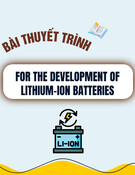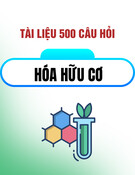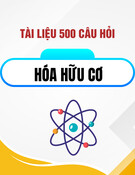
TNU Journal of Science and Technology
229(06): 82 - 93
http://jst.tnu.edu.vn 82 Email: jst@tnu.edu.vn
RESEARCH ON SUSTAINABLE DEVELOPMENT LEVEL:
A CASE STUDY OF HAI PHONG AND QUANG NINH
Dao Vu Phuong Anh, Pham Thi Thu Ha*, Nguyen Hung Cuong
University of Science - Vietnam National University, Hanoi
ARTICLE INFO
ABSTRACT
Received:
03/01/2024
The idea of sustainable development emerged several decades ago as a response to
growing environmental problems related to inappropriate management of natural
resources and increase in extreme weather phenomena, especially in developing
countries. Using indicators is one of the best ways to monitor and measure progress
towards sustainable development. In this article, we have presented the practical
use of the Delphi technique and the Stable Prioritization Towards Ideal Solution
(SPOTIS) method to in-depth assess the level of sustainable development of Hai
Phong and Quang Ninh in the period 2016 - 2021. The research findings are as
follows: First, the research build a sustainable development assessment system
including 26 indicators that are compatible and have data available in accordance
with the economic, social and environmental characteristics of the study area.
Second, Hai Phong and Quang Ninh generally developed in a positive direction
with sustainable development index (SDI) continuously increasing with increase of
1.07% and 1.09% respectively from 2016 to 2021. Third, the economic, social, and
environmental aspects in both provinces developed unbalanced. The study
recommends that it is vital to strengthen the policies to have a simultaneous
development on the four dimensions of HDI, economy, society and environment to
improve the SDI. Finally, based on research findings, the research indicators and
methods can be put forward to assess the sustainable development level in other
provinces and specific cases with similar characteristics.
Revised:
25/3//2024
Published:
25/3//2024
KEYWORDS
Sustainable development level
Hai Phong
Quang Ninh
Delphi technique
SPOTIS method
NGHIÊN CỨU MỨC ĐỘ PHÁT TRIỂN BỀN VỮNG:
NGHIÊN CỨU ĐIỂN HÌNH Ở KHU VỰC HẢI PHÕNG VÀ QUẢNG NINH
Đào Vũ Phương Anh, Phạm Thị Thu Hà*, Nguyễn Hùng Cường
Trường Đại học Khoa học Tự nhiên - ĐH Quốc gia Hà Nội
THÔNG TIN BÀI BÁO
TÓM TẮT
Ngày nhận bài:
03/01/2024
Phát triển bền vững xuất hiện cách đây vài thập kỷ như một giải pháp ứng phó đối
với các vấn đề môi trường ngày càng gia tăng, liên quan đến quản lý tài nguyên thiên
nhiên không hợp lí và gia tăng các hiện tượng thời tiết cực đoan, đặc biệt là ở các
nước đang phát triển. Sử dụng các chỉ thị là một trong những phương cách tốt nhất
để quan trắc và đo lường tiến trình hướng tới phát triển bền vững. Nghiên cứu này đã
sử dụng kỹ thuật Delphi và phương pháp SPOTIS để đánh giá mức độ phát triển bền
vững của Hải Phòng và Quảng Ninh trong giai đoạn 2016 - 2021. Kết quả nghiên
cứu đạt được như sau: thứ nhất, nghiên cứu đã xây dựng hệ thống đánh giá phát triển
bền vững gồm 26 chỉ thị phù hợp và có sẵn dữ liệu phù hợp với đặc điểm kinh tế, xã
hội và môi trường của khu vực nghiên cứu. Thứ hai, Hải Phòng và Quảng Ninh nhìn
chung phát triển theo hướng tích cực với chỉ số phát triển bền vững (SDI) liên tục
tăng với mức tăng lần lượt là 1,07% và 1,09% từ năm 2016 đến năm 2021. Thứ ba,
các khía cạnh kinh tế, xã hội và môi trường ở cả hai tỉnh phát triển không cân
bằng. Nghiên cứu kiến nghị rằng để cải thiện SDI thì điều quan trọng là phải tăng
cường các chính sách để có sự phát triển đồng thời trên bốn khía cạnh HDI, kinh tế,
xã hội và môi trường. Cuối cùng, dựa trên kết quả nghiên cứu, các chỉ thị và phương
pháp nghiên cứu có thể được áp dụng để đánh giá mức độ phát triển bền vững ở các
tỉnh khác và các trường hợp cụ thể có đặc điểm tương tự.
Ngày hoàn thiện:
25/3//2024
Ngày đăng:
25/3//2024
TỪ KHÓA
Mức độ phát triển bền vững
Hải Phòng
Quảng Ninh
Phương pháp Delphi
Phương pháp SPOTIS
DOI: https://doi.org/10.34238/tnu-jst.9531
* Corresponding author. Email: phamthithuha.hus@gmail.com

TNU Journal of Science and Technology
229(06): 82 - 93
http://jst.tnu.edu.vn 83 Email: jst@tnu.edu.vn
1. Introduction
Intending to develop a green economy, all countries in the world agree on implementing
sustainable development goals [1]. Sustainable development is researched in many different fields,
including the assessment of sustainable development indices, which will provide essential information
for building a better and more sustainable society. The set of sustainable development indicators (SIs)
plays an extremely important role in assessing and monitoring the current state of sustainable
development at local, provincial, national and global scales [2]. A set of SIs will be the foundation for
policymakers to provide better policies and allocation of resource use.
Vietnam is one of the countries strongly committed to implementing sustainable development
goals through the issuance of strategic directions, policies and decisions to implement sustainable
development policies and goals of Vietnam such as Decision No. 153/2004/QD-TTG, No.
432/QD-TTg, No. 1602/QD-TTg, No. 160/QD-TTg and Decision No. 2157/QD-TTg [2], [3]. In
particular, Decision 2157/QD-TTg issued a system of 28 general statistical indicators, consisting
of economic, social, and environmental aspects and 15 specific indicators for each region. In the
work of Tran Van Y and others, the authors suggested a sustainable development evaluation
system including 77 regional indicators, 70 provincial indicators and 49 district indicators for the
Central Highlands [2]. Another research with 39 indicators on economic development issues, sea
and island areas, natural disasters, etc to evaluate sustainable development level for Quang Tri
and Thai Binh [6], [7]. The research work of Nhung proposed a set of 18 indicators for
sustainable development assessment in Ha Tinh [5]. The sustainable development indicator
system of Lam evaluates the SDI of Thanh Hoa province for the period 2010 - 2014 including 33
indicators in 5 areas of economic, social, environmental, infrastructure and governance [8].
These findings contribute to broadening the application of sustainable development
assessment but may reveal some certain limitations as follows: (1) The SIs system is very
extensive and difficult to apply to various geographical areas, (2) There are numerous
applications to monitor sustainable development in different areas [8] and (3) Indicators are not
updated according to the latest United Nations sustainable development goals. To address those
limitations, the Stable Priority Order Towards Ideal Solution (SPOTIS) method is an effective
solution to assess the level of sustainable development for Hai Phong and Quang Ninh. This
method similar to the Characteristic Objects Method (COMET) was created with being rank
reversal phenomenon resistant. To increase the reliability of the above assessment method, we
combine with the Delphi method to provide a set of indicators for sustainable development in
each field. The Delphi method is an iterative process used to collect and distill expert judgments
using a series of questionnaires interspersed with feedback. The purpose of this method is to
build consensus forecasts from a group of experts in a structured iterative manner [9].
Therefore, the objective of this research is to establish a system of SIs to evaluate the
sustainable development level of Hai Phong and Quang Ninh in the period 2016-2021. The
results of the research are reference for managers, communities, and policymakers of the two
provinces to build solutions and strategies for sustainable development aiming to become the
marine economic centres of the country.
2. Methodology
2.1. Study area
Hai Phong is a coastal city located downstream of the Thai Binh river system, in the Northeast
region of the Red River Delta about 120km east-northeast of Hanoi. Currently, Hai Phong has 15
districts, 11 towns, 14 industrial parks, and 1 economic zone adjacent to Hai Phong port, and is a
multi-industry, multi-sector marine economic center of the Northern coastal region and the whole
[10]. With its exceptional geographical location characteristics, Hai Phong was selected as the
site for a seaport and in fact has become a prime port city, the largest in the North. Hai Phong is

TNU Journal of Science and Technology
229(06): 82 - 93
http://jst.tnu.edu.vn 84 Email: jst@tnu.edu.vn
one of the traffic hubs, including roads, railways, aviation and especially sea routes, with the
largest trade opening with the world in the North [4]. Therefore, Hai Phong (along with a part of
Quang Ninh) naturally becomes the "gateway" for the entire Red River Delta, the Northern
Midlands and Mountains, and even further, the Southern region of China.
Quang Ninh is a coastal province in the Northeast region of Vietnam, about 125 km east of
Hanoi. Quang Ninh has 4 cities, 2 towns and 16 industrial parks, located near seaports,
convenient for trade. With a favorable terrain, there are both land and sea borders, with a sea
length of up to 250 km, a width of over 6,000 km2 of sea surface, over 1,000 km2 of island area
and a system of inland waterways near the [11]. With 800 km and more than 130 inland
waterway ports, Quang Ninh is a locality with many advantages to develop into one of the
sustainable marine economic centers of the country (Figure 1).
Figure 1. Location of study area (Quang Ninh and Hai Phong Provinces -Viet Nam)
Along with its potential, the region is one of the regions in Vietnam strongly affected by
climate change [12]. Other natural disasters frequently occur such as flash floods and landslides,
killing 10 people and 42 houses being swept away (1999-2022) [4], [13]. In addition, socio-
economic development is still significantly and sustainably limited because excessive population
growth and increased environmental pollution. Therefore, analyzing and evaluating the
sustainable development of Hai Phong and Quang Ninh will provide important knowledge to
improve economic, social, and environmental sustainability. This topic will also provide
recommendations on how to reverse "negative" benefits or maintain "positive" benefits from a
sustainable development perspective.
2.2. Research method
The SIs system is established and evaluated based on the combination of two approaches, the
Stakeholder Delphi technique, and the Stable Preference Ordering Towards Ideal Solution
(SPOTIS) method. The indicator system inherits the content of case studies in the world [14],
[15] and is suitable for Vietnam’s sustainable development curriculum [16] in general and
regional in particular. The indicators framework to evaluate the sustainable development level of
Hai Phong and Quang Ninh consists of HDI, economic, social, and environmental aspects along
with corresponding indicators. In this research, 26 proposed indicators were selected to evaluate
3 main dimensions of sustainable development.
2.2.1. Secondary data collection
The research collected and processed available domestic and international data on Google
Scholar to statistically analyse and evaluate the economic, social and environmental indicators
announced by local authorities and other data sources at different levels (national, regional, and

TNU Journal of Science and Technology
229(06): 82 - 93
http://jst.tnu.edu.vn 85 Email: jst@tnu.edu.vn
provincial). Moreover, the study also collects information and data from relevant departments,
localities, research and projects to synthesize and analyse necessary documents and data to
establish an indicators set for sustainable development assessment at the city level.
2.2.2. Primary data collection
This study applied the Delphi method and field surveys to collect data for sustainable
development assessment for Hai Phong and Quang Ninh. Delphi method is through an iterative,
stakeholder consultation process [6]. 50 experts were randomly selected from 04 stakeholder
groups representing local governments, citizens, interdisciplinary scientists and businesses. Two
rounds of the Delphi method are conducted using a questionnaire system on 50 selected experts.
The first round was carried out from August 2022 to November 2022 and the second round was
taken place from December 2022 to March 2023 in Hai Phong and Quang Ninh.
2.2.3. Establishment of indicator set for sustainable development (Delphi Technique)
The RAND Corporation created the Delphi technique in the 1950s to forecast the effect of
technology on warfare [27]. The topics that have been applied to this method of research are
health care [20], education [21] management [22] and environmental science [23], [24] and being
comprehendly assessed in many topics [25]–[27]. The Delphi method will require 2 rounds of
questioning [28] and panel members respond in the anonymous feedback form. The method can
predict future problems [19] and then have solutions to deal with [29].
In this study, the Delphi process is implemented according to the following steps:
Step 1: Preparation
• Collect, synthesize and analyze domestic and international data to develop a set of indicators
for sustainable development assessment.
• The sustainable development assessment indicator system was tested and investigated in a
small group of 10 experts and further adjusted. 33 initial indicators were identified for inclusion
in the review.
Step 2: Adjustment
• Delphi questionnaire round 1 was sent to 50 experts. Analyze the Delphi questionnaire
round 1 's results by testing the concordance (Kendall's W, Schmidt, 1997- see Table 1) and
reliability (Cronbach's alpha, Cronbach L.J., 1951- see Table 2) coefficient to prepare for develop
the Delphi questionnaire round 2.
• Construct the Delphi questionnaire round 2 based on the results of Delphi questionnaire round 1.
• Delphi questionnaire round 2 was sent back to the experts who participated in round 1.
Step 3: Analyzation and assessment
• Analyze Delphi questionnaire round 2's result by evaluating the concordance (Kendall's W)
and reliability (Cronbach's alpha) coefficient to develop a sustainable development indicators set.
Table 1. The agreement and confidence associated with Kendall's W [17]
Value of Kendall's W
0.1
0.3
0.5
0.7
0.9
Interpretation
Very weak
agreement
Weak
agreement
Average
agreement
Strong
agreement
Unusually strong
agreement
Confidence in ranks
None
Low
Fair
High
Very high
Table 2. Cronbach’s Alpha Level of Reliability [18]
Cronbach’s Alpha Score
Level of Reliability
0.0 – 0.1
Less Reliable
0.1 – 0.3
Rather Reliable
0.3 – 0.5
Quite Reliable
0.5 – 0.7
Reliable
0.7 – 1.0
Very Reliable

TNU Journal of Science and Technology
229(06): 82 - 93
http://jst.tnu.edu.vn 86 Email: jst@tnu.edu.vn
One workshop was carried out with, the Delphi method concluded after 2 rounds of expert
consultation. The information collection process was included in the Delphi questionnaire to
express the individual opinions of each expert. Through consultation, experts said that 26/33
indicators are essential in assessing the sustainable development level of Hai Phong and Quang
Ninh. The sustainable development assessment system has 26 indicators including 7 economic
indicators, 11 social indicators, 7 environmental indicators, and 1 composite index (the Human
Development Index (HDI)). After establishing a sustainable development level assessment
system, the authors collected the necessary data, and calculated and evaluated the level of
sustainable development. From there, the results will help provinces monitor the level of
sustainable development over the years and adjust appropriate plans and decisions to achieve
sustainable development goals (Figure 2).
Figure 2. Framework for assessing sustainable development
2.2.4. Stable Preference Ordering Towards Ideal Solution (SPOTIS) method for sustainable
development assessment
The Stable Preference Ordering Towards Ideal Solution (SPOTIS) method is a newly
developed method dedicated to multi-criteria decision-making [30]. It requires much less
information than the other approaches. Moreover, SPOTIS fits in the framework of classical
Multi-Criteria Decision Making problematic because it uses directly the MCDM score matrix
available, and the important weighting factors of criteria [30]. In addition, this method can also
guarantee that each indication has the same weight and keep cities with uneven development
from reaching high SDI.
In this paper, the real static value of the indicators was normalized to the range value between
0-1. To perform this work, the expert evaluation and Min/Max calculation were applied.
Step 1: SIs contain two types of indicators, consisting of positive indicators (increased
indicator values have a positive impact on sustainable development), and negative indicators
(increasing indicator values have a negative effect on sustainable development). Each indicator
type is applied in different equations as follows:
- For positive indicators:
(1)
- For negative indicators:
(2)
For Eq. (1) and Eq. (2), is a value of indicator x,
denotes for the maximum
and minimum scaled values of indicator x, respectively.



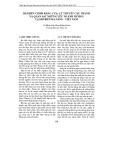
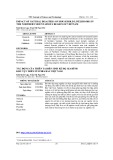
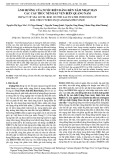
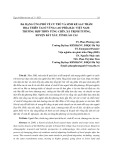
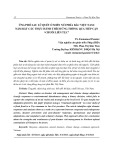


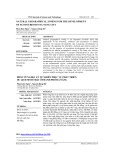
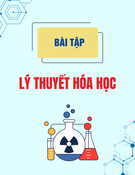
![Đề thi kết thúc học phần Nguyên lí Hóa học 2 [mới nhất]](https://cdn.tailieu.vn/images/document/thumbnail/2025/20251014/anhinhduyet000/135x160/69761760428591.jpg)


